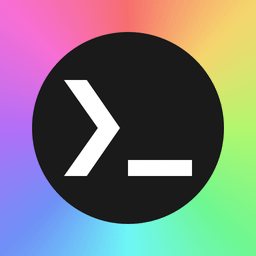No, problem not solved, problem half-heartedly worked around. People dislike Discord for several reasons, bridging it to whatever different platform will at best be a bandaid.
dnzm
Ook @dnzm@lemmy.ml / @dnzm@kbin.social. Blog op doenietzomoeilijk.nl.
- 0 Posts
- 16 Comments
This sounds like it’d be exactly how I currently use Tumbleweed on my workstations: I don’t update daily, but rather every once in a while. I appreciate the new versions of things, but being on the daily bleeding edge is more work than I care to put in.
I can also see this working quite nicely for those with nvidia hardware, where with TW you’d sometimes end up with a kernel too new for the drivers to get shoehorned in. A slightly easier-going pace would help there.
It also reminds me of Android, where you have roughly monthly updates (theoretically) and every now and then a bigger one.

 10·10 months ago
10·10 months agoInstalling a software package through a distro’s package manager sounds like a perfectly fine “Linux way” to me.
Of course, that filesystem exists today as btrfs.
Which, to be fair, isn’t exactly the fasted FS around. I love me some btrfs, but not for the benchmarks.
That’s correct. Btrfs will simply divide your disks in 1GB chunks, and when writing, always ensure that a bit of data is always stored in 2 chunks on two different disks. You can also do 1C3 or 1C4 if your data is truly that critical, which means data is always stored in 3 or 4 chunks (on different disks), respectively. Of course, that also requires at least they amount of drives.
This chunking is also the reason why the sizes of the drives don’t have to match, as long as it’s possible to divide it evenly you won’t lose space as unused. Simply put, make sure your largest drive is not larger than your other drives combined and you should be fine.
In my case, data will always see one copy on the 4gb drive, and another on either of the 2gb drives.
As for the reason to switch: that’s something I can get behind, although you could also just slap Proxmox on it an do all your experimenting in VMs; at least that keeps the server itself running as smoothly as possible, while not limiting you in your learning experiences.
As for btrfs: it most certainly does have RAID functionality. RAID5/6 is considered unstable (although I’ve heard/read from plenty of people who have great experiences with it, provided you don’t run into the edge cases), but I’m sticking with RAID1 because I don’t need to run the risk, and I’m not sure if waiting for a checksum calculation whenever something does go pear-shaped is going to do a whole lot of good for me.
Anyway, as for my setup: an HP Microserver (an oldie, a Gen8 with a Xeon switched in) running Leap, powering a few VMs, a collection of Docker containers, and a few “native” services (nginx, PHP, stuff like that). The root fs is a single SSD (btrfs SINGLE with some directories having a flag to disable COW), and there’s a data pool of 3 spinning disks (2x2 and 1x4GB), 4GB effective, that contains “data”. Most of it is setup with Ansible these days, hence no real use for YaST on that machine for me.
You’ll lose more than just snapshots, btrfs does a bit more than just that.
I’ve been running my NAS/server on btrfs for years, now. I started out on Rockstor (which was still based on CentOS back then, they switched to an OpenSUSE core some years ago), later I decided to roll my own setup on Leap, partially because I already had (and love) Tumbleweed on my workstations, and keeping everything on one distro is just less mental overhead. For me, it’s been rock solid. I like OpenSUSE, I like btrfs. Snapshots have saved my bacon on the workstations more than once when bleeding edge updates and nvidia clashed; it’s never been an issue on the server of course, and I don’t really use them for data (although the option is there). I do however use RAID1, on 3 drives, and being able to just add a drive even if it’s not the same size as the others (within reason), is a big plus and one of the reasons I opted for btrfs back then.
OpenSUSE as a distro is great, there’s a fair amount of software, stuff that’s not in the default repos might be on OBS. It’s a fixed-release distro but the cadence feels somewhat different from Ubuntu’s. YaST is great when you want to have some easily accessible menu driven interface to setting things up, rather than poke around in config files (I’m more of a config file guy, but having the option is nice).
Of course, as for opinion… It all depends on what you want to use the machine for, where your experiences lie, and so on. What’s the NAS doing, besides file shares, what do you hope to gain by switching distros? Where are you on the scale from “I want it to just work, something like a Synology would be nice if they weren’t so pricey” to “I hand-compile kernels for fun”?

 101·1 year ago
101·1 year agoOr being forced to find a headset somewhere because my hearing is shit and I can’t make out what they’re saying (and don’t get me started on the auto-generated sub’s).
Also, not having ads waved in my face on YouTube is a plus.
Also, I read a lot faster than the average youtuber talks.
Some things benefit from video, but tech articles tend to not fall under that category.
Funny, that, didn’t work for me on ff/Android.
Edit: on reload, it suddenly did. 🤷♂️
I’m currently giving Karousel a go, seems like a decent step between a full on tiling wm (which isn’t for me, really) and a stacking one.
With those rims and tires, and in that location, I can assure you that thing isn’t for work.
The green wooden paneling is a dead giveaway, that’s a fairly Zaanstreek thing.

 8·1 year ago
8·1 year agoNot OP, but I’ve been running TW for… 5-ush years now, I think, and it’s been great. Even when I still had Nvidia hardware and sometimes ran into a kernel being too new or whatever it was that made the Nvidia driver shit the bed: roll back to the previous snapshot, wait for a couple of days. Apart from that it’s been pretty much rock solid.
The only thing I might switch to, is Kalpa.





They don’t, officially, as far as I know it’s always been an “at your own risk, might get your account banned” endeavor.